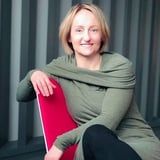Summary
Research has to come together somewhere, happen somewhere, live somewhere, and—in order for it to have an impact on product—it has to be effectively shared somewhere. There are more user research tools than ever, and choosing among them can be overwhelming. That’s why the team at User Interviews created the UXR Tools Map, along with a searchable database of over 200 user research tools. We’ll talk about the process behind creating the map, plus share insights and examples of how to create the best stack for your team, regardless of budget.
Key Insights
-
•
The UX Research Tools Map categorizes over 100 curated tools into five main research functions: research ops, passive insights, active research, insight management, and design tools.
-
•
A significant portion of UX researchers (44%) are uncertain about their research budgets, and only 8% report stakeholders frequently access research results.
-
•
Many UX research tools have expanded their scope, becoming multifunctional, complicating how they fit into research workflows.
-
•
The visual subway map metaphor helps users understand tools as single-function 'stations' or multifunctional 'interchanges' connecting multiple research tasks.
-
•
The tools map intentionally balances well-known products, enterprise-grade options, and innovative or lesser-known tools to avoid overwhelming users.
-
•
Design and curation are critical as new tools appear or existing ones evolve, requiring continuous updates and balancing complexity with usability.
-
•
There’s value in assembling tool stacks tailored to needs ranging from fully free DIY solutions to large enterprise setups integrating multiple platforms.
-
•
Qualitative data management remains a persistent challenge in UX research, requiring effective insight storage, organization, and analysis tools.
-
•
Some tools offer recruiting, scheduling, and incentives only through proprietary panels, leading to potential limitations in participant diversity and flexibility.
-
•
Collaborative tools like Figma, Miro, and Whimsical play key roles in prototyping and brainstorming during UX research to generate early feedback efficiently.
Notable Quotes
"User research is interdisciplinary; only two thirds of people who do research describe their job as primarily research."
"Only 8% of people we talk to said their stakeholders know how to access results and do so often."
"Choosing among all these research tools can be really overwhelming and intimidating."
"We took a little bit more of an editorial approach and kind of trimmed down the tools to keep it legible and usable."
"Our subway lines are tool functions, and stations are where single-function tools live."
"Multifunctional tools are interchange stations connecting several research activities."
"Sometimes we had to add bus lines simply because some tools couldn’t fit into the existing grid."
"Tools are getting much more complex and have more crossover, which made redesigning the map a challenge."
"Simple, low-fi prototyping tools can get you tons of feedback without much upfront design work."
"We’re always taking suggestions for new apps to add to the tools map for later iterations."
Or choose a question:
















More Videos

"Starting a repository for your existing data, however simple, is critical to enable efficient secondary research."
Cara Maritz Rachel NyThe Art of Extrapolation
March 29, 2023

"Everyone has a different perspective and partial knowledge, and all are right—but that creates silos."
Tatyana MamutOpening Keynote: Breaking Conway's Law--or How to Work Differently and Not Ship Your Org Chart
June 3, 2019

"Talking in first person increases empathy and leads to better design outcomes."
Noz UrbinaRapid AI-powered UX (RAUX): A framework for empowering human designers
May 1, 2025

"Many knowledge systems have little ability to create new interfaces, but their experience can be shaped by how they’re used and configured."
Ren PopeBuilding Experiences for Knowledge Systems
June 6, 2023

"Day three is about keeping people at the center of an expanding enterprise, which is tricky but so important."
Bria AlexanderOpening Remarks
June 11, 2021

"Marketers don’t try very interesting things when their confidence in data is low, which can create a downward spiraling reinforcing loop."
Sarah FlamionComplex Problem? Add Clarity by Combining Research and Systems Thinking
March 31, 2020

"Signals are something that’s happening at the horizon, percolating at the fringes of society or in a narrow subset of the population."
Sarah GallimoreInspire Progress with Artifacts from the Future
November 18, 2022

"Showing up is half the battle; being on calls and asking questions makes you visible."
Dave Hoffer Joanne WeaverUX Job Search AMA #2 with Joanne Weaver and Dave Hoffer
April 3, 2025

"Hope is the only thing that lets the conversation continue and reach forward."
Erika FlowersAI-Readiness: Preparing NASA for a Data-Driven, Agile Future
June 10, 2025

















